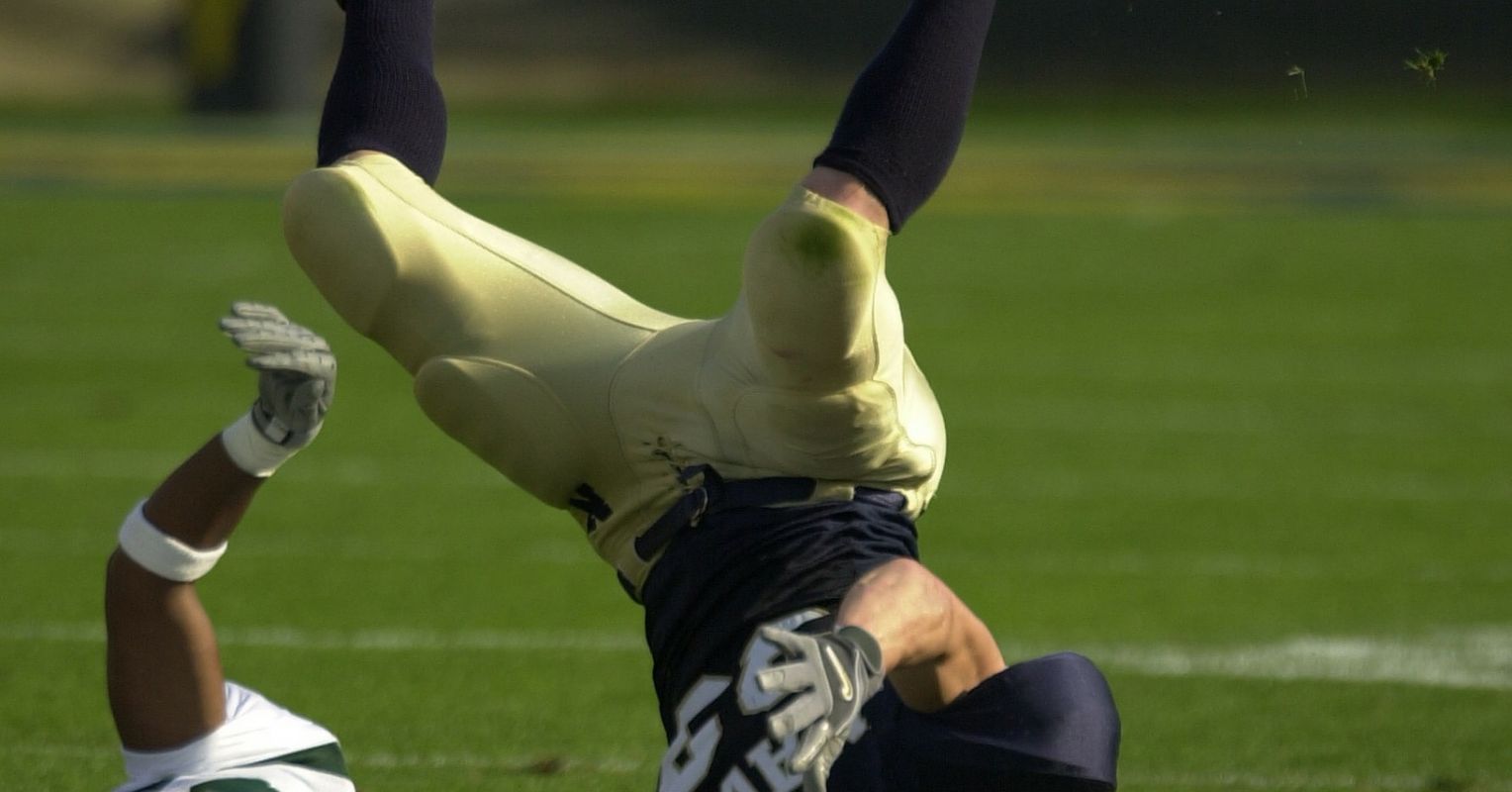[ad_1]

Source: 12019/Pixabay
Addison, age 9, and her brother Jack, 12, were on a trampoline with their father, lineman and NFL Super Bowl champion, Nate Hobgood-Chittick. Addison yelled, “Daddy, Daddy, look at me,” but Nate did not seem to hear. When she went over to him, he said, “I need to sit down.” She kneeled down and begged him to get up. She called Jack who pleaded, “Dad, please, please wake up,” writes Nate’s wife Kelsey in her book, Second Half: Surviving Loss and Finding Magic in the Missing.
Kelsey looks at the role of football in players’ lives and the extreme risks they take with their bodies and brains to be part of America’s game. She’s conflicted, but she’s a fan, she told me. “Football is archaic and violent, yet it provides a sense of community and brings people together.”
While waiting for Nate’s first autopsy report, Jack responded to his mother’s concerns for him: “Mom, I understand. If football had any part in his [Dad’s] death or any impact on his brain, I won’t ever ask to play.”
Kelsey feels strongly that if parents are pushing their kids into sports that don’t keep their bodies safe, they are not their children’s advocates and not doing their job as parents. She rightly points out that “the current narrative around kids and sports needs to change. Sport used to be about being a part of something; I don’t know where the message got switched from caring about academics and other people. Now it’s a drive to get a scholarship or eventually play professionally. Parents have lost control in the obsession for kids to excel athletically when the chances for a scholarship or pro contract are so slim.”
Now there’s even more reason to rethink this imbalance. Research finds damage to the brain of teenage athletes comes from any blow to the head, not only from concussions. The study published in the journal Brain examined the postmortem brains of four high school-age male athletes who had played football and other contact sports. Their results showed that head injuries set disabling and deteriorating conditions in motion almost immediately after receiving blows to the head. These particular teens died within months after suffering head injuries.
Should My Child Play Football?
The NFL thinks so, recently “targeting parents on Facebook to explain the benefits of football and to encourage them to sign up their children to play flag football,” hoping that they will become lifelong fans, according to The New York Times.
Ten years ago on a CBS sports program, former NFL quarterback Boomer Esiason agreed that football is an obsession, adding that “the only way that would change is if the moms of the world would decide to say, ‘My little boy can’t play football.'”
When he was quite young, I started telling my son that he could play any sport, but not football. Nate Hobgood-Chittick’s mother felt similarly. “From the time he started playing at age 12, Nate’s mother was sick about it. She watched very few of his games and she did not even attend the Super Bowl when he played in the winning game,” Kelsey said.
The passion to play football is all-consuming. The training is relentless, the wear and tear on the body unforgiving. Players train endlessly with seemingly every hour of their day scheduled. According to Kelsey and with some notable exceptions, “Very few players walk away during their usually short careers. The money is too good, and they don’t know what else to do with their lives; they aren’t trained to do anything else. Players say to themselves, I’ll play one more year.”
Nate’s love of the game was so intense, he once told his wife, “They’ll have to drag me out of there in a body bag because I’m never going to quit.” He retired in 2004, 13 years before he died on the trampoline, but long after his heart and brain had been severely compromised.
In Nate’s case, the coroner reported, “Linemen need to be bigger, stronger, and more aggressive than ever before. That means their hearts will have to work even harder and pump faster. And with that type of stress and overuse, a heart that is meant to live for 80 years may give out decades before that.”
Nate was only 42 years old when his heart gave out.
Blows to the Head Kill Brain Tissue
On the field, kids and grown-up players take injurious knocks to the head. Kelsey wishes that parents and their children who want to play football could speak with a former player. Personality changes and suicides because of brain injury are well documented.
Tony Dorsett, Hall of Famer and Dallas Cowboys running back told D Magazine that he wanders in a daze, not remembering how to get to places, wondering why he is short-tempered and doesn’t recognize people he knows well. He is one of the few living retired players who has had his brain scanned (this is usually done postmortem) by a UCLA research team. D Magazine reports from the study, “The four players were diagnosed with signs of chronic traumatic encephalopathy, or CTE, a degenerative brain condition.”
After learning that Nate suffered from CTE, Kelsey recalls feeling a strange relief. “We didn’t have to spend the rest of his life taking care of him or watching him deteriorate, which would have been his worst fear.”
Kelsey admits, “I’m torn because I love the people and experiences surrounding football. But, I hate football. It was a beautiful life until it wasn’t.” Her son Jack plays basketball.
Copyright @2022 by Susan Newman
Related Posts:
[ad_2]
Source link



